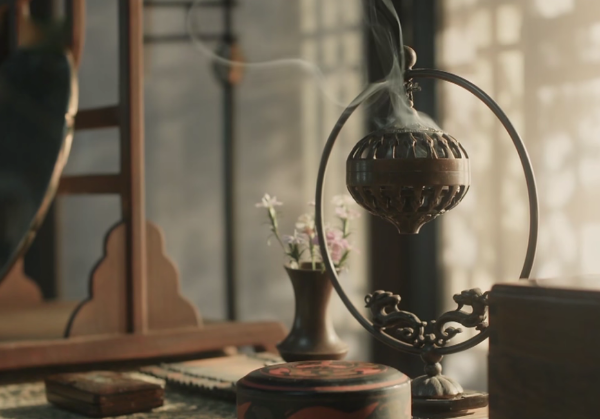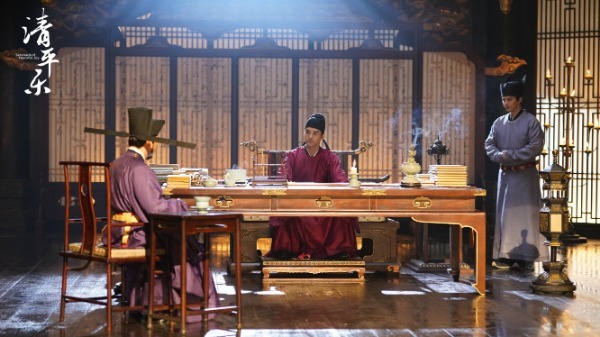 |
|
A still from Serenade of Peaceful Joyfeatures a hollowed-out copper incense burner. [Photo/douban.com] |
Incense burning
Unlike modern people who spray perfume to scent the air and body, ancient Chinese people were fond of burning incense made of fragrant wood and herbs, for an aesthetically pleasing atmosphere and naturally perfumed bodies.
That's why scenes with incense smoke curling upwards from animal-shaped copper burners or porcelain ones are pervasive in the drama.
Dating from the Shang Dynasty (c. 17th-11th BC), incense burning was initially and also essentially a part of worshipping practices to show respect to gods and ancestors.
In addition, ancient Chinese also burnt incense to tell time, repel insects and promote health with medicinal aromatic blends. Furthermore, literati in the Tang and Song dynasties held incense appreciation gatherings where they might also sip tea, listen to zither tunes, compose poetry and discuss painting.
 |
|
A scene from Serenade of Peaceful Joy features a copper incense burner and a porcelain one. [Photo/douban.com] |